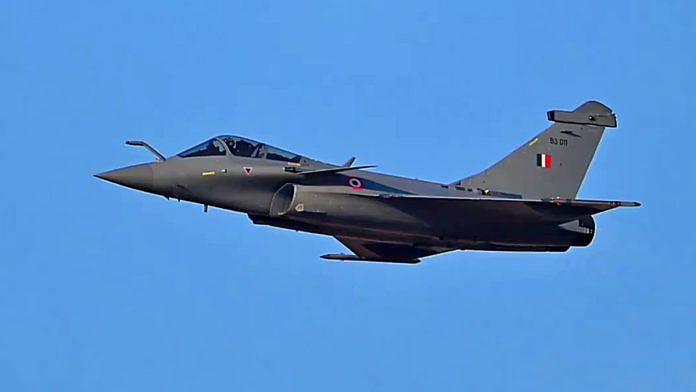This pattern persisted in the initial phase of Operation Sindoor as well, wherein India adopted a restrained approach, targeting terrorist infrastructure, while taking great care to avoid civilian and Pakistani military casualties. By forgoing Suppression of Enemy Air Defenses (SEAD) and Destruction of Enemy Air Defenses (DEAD) and signalling intentions in advance, India faced a prepared adversary. Operating under restrictive rules of engagement, IAF ceded the initiative, aligning with political de-escalation goals but undermining airpower’s effectiveness. This approach risked higher attrition and limited impact.
Only after Pakistan’s retaliatory strikes on Indian civilian and military targets did the Indian Air Force (IAF) unleash its full might, albeit briefly. Satellite imagery confirmed precise, devastating strikes across Pakistan, including at heavily fortified sites, underscoring airpower’s potency when used offensively. Had this approach been sustained, the IAF could have inflicted far greater damage, reinforcing the axiom that airpower is essentially an offensive weapon of war.
As RAF Air Marshal Arthur Tedder noted, “Air warfare cannot be separated into little packets; it knows no boundaries on land and sea other than those imposed by the radius of action of the aircraft; it is a unity and demands unity of command.”
CCDE remains a cornerstone of airpower, balancing centralised resource allocation with decentralised operational flexibility. Centralised control at headquarters ensures unified direction and efficient resource use, while decentralised execution empowers local commanders to adapt to dynamic battlefield conditions. During Operation Sindoor, this principle was validated as local commanders neutralised drone and missile threats using available air defence resources, while centralised headquarters directed precision strikes deep into enemy territory, spanning the entire length and width of Pakistan.
This lesson is particularly relevant amid discussions on the theaterisation of India’s armed forces. While integrating command headquarters across the three services is logical, fragmenting airpower resources across theatres contradicts proven airpower principles. Indian airpower must remain centrally controlled by professional airmen, with field commanders granted autonomy for mission execution.
If theaterisation is unavoidable, treating India’s entire territory, including island territories, as a single theatre for airpower operations is advisable to preserve its unity and effectiveness.
Airpower is uniquely tied to technological advancements, more so than other military domains. Unlike ground or naval forces, which can offset technological inferiority with terrain, training, or strategic positioning, airpower has to confront technological asymmetry directly.
For example, between the 2019 Balakot strikes and Operation Sindoor in 2025, BVR air-to-air missiles considered cutting-edge in 2019 became legacy systems in 2025, replaced by more advanced versions. In contrast, the T-90S Bhishma tanks (first in 2009) remain the India Army’s main battle tank. Similarly, the INS Vikramaditya (originally commissioned in 1987, refurbished in 2013) remain the Indian Navy’s flagship carrier.
Airpower is extremely susceptible to advancements in aerodynamics, electronics, metallurgy, computing, and, increasingly, space-based systems. Post-Balakot, Pakistan’s F-16s with AIM-120C missiles held a beyond-visual-range (BVR) advantage. India with Meteor-armed Rafale fighters in 2020, only for Pakistan to regain parity with PL-15-armed J-10C aircraft in 2022. The IAF is now its Su-30 fleet with Astra Mk2/3 BVR missiles to surpass Pakistan’s PL-15/17 capabilities. Pakistan’s reported induction of fifth-generation J-35 aircraft from China would swing the pendulum in their favour, which in all likelihood would be countered by India through its own stealth programme or imported platforms.
This technological race underscores airpower’s dependence on staying at the forefront of innovation, as there are no fallback options in air combat.
Operation Sindoor reaffirmed airpower’s critical role in modern warfare and the enduring validity of its doctrinal principles. The offensive nature of airpower, the necessity of centralised control with decentralised execution, and its symbiotic relationship with technology were vividly demonstrated.
These lessons highlight the need for political and military leaders to leverage airpower’s full potential without undue restraint, maintain unified command structures, and prioritise technological advancements to sustain a strategic edge.
As India refines its military strategy and pursues theaterisation, these insights must guide reforms to ensure airpower remains a decisive instrument of national power. By addressing identified gaps and embracing these principles, India can enhance its airpower’s effectiveness in future conflicts, safeguarding national interests with greater precision and impact.
(Edited by Theres Sudeep)








